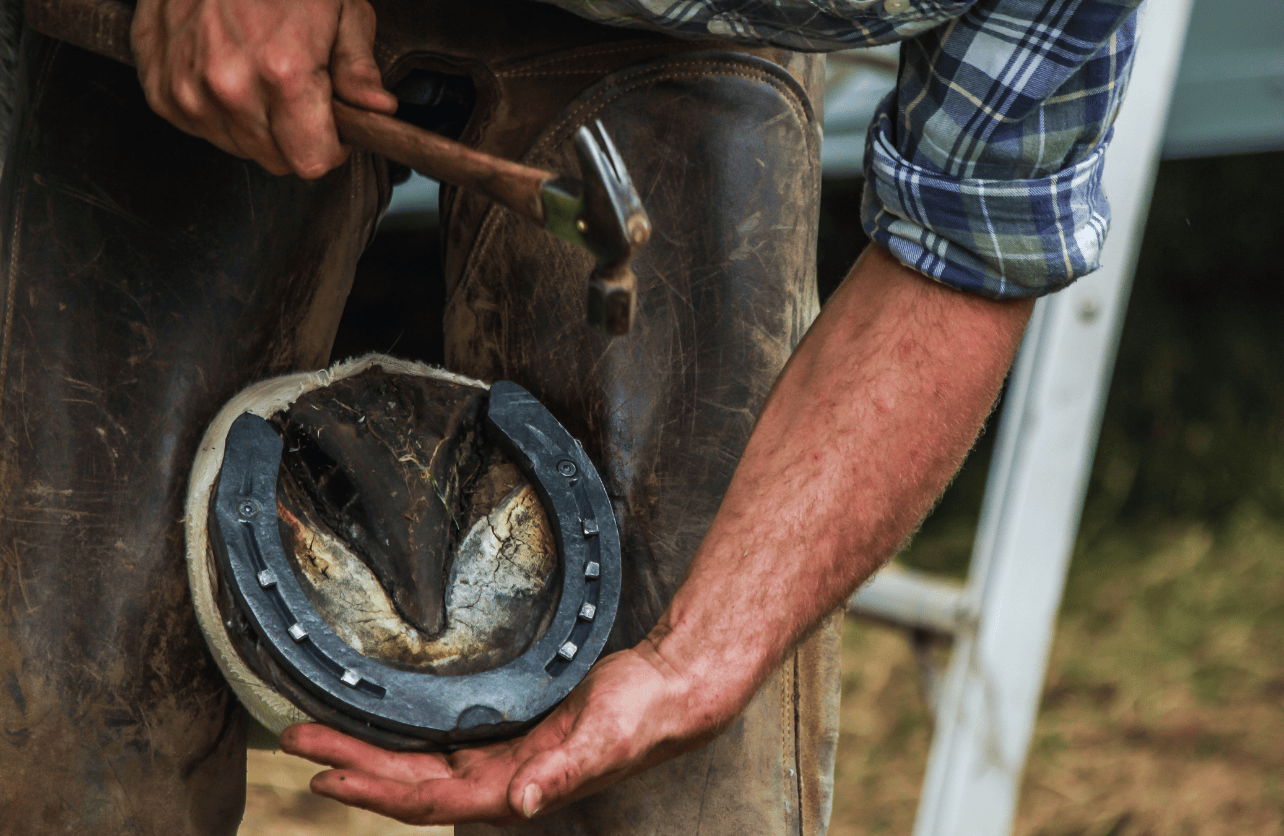Why Do Horses Need Shoes?

Horseshoes have been an essential part of equine care for centuries, protecting and supporting horses’ hooves as they perform various activities. While wild horses naturally maintain their hooves through continuous movement over varied terrains, domesticated horses often require additional support due to the unique demands of their environment and workload. Let’s explore why horses need shoes, how they work, and when they might not be necessary.
The Role of Horseshoes
Horses’ hooves are made of keratin, the same protein that forms human fingernails, and they grow continuously. In the wild, constant movement over rough surfaces wears down the hooves naturally, maintaining their shape and size. However, domesticated horses live under very different conditions. They often work on surfaces that do not mimic natural terrains, and they are asked to perform tasks that put extra strain on their hooves. Horseshoes provide protection, traction, and sometimes therapeutic support to help maintain hoof health and performance.
Protection from Wear and Tear
One of the primary reasons horses wear shoes is to protect their hooves from excessive wear. Domesticated horses frequently walk or work on hard surfaces like concrete, asphalt, or rocky trails that can damage their hooves over time. Unlike wild horses, whose hooves naturally adapt to rough conditions, domesticated horses often lack the conditioning necessary to withstand these terrains without additional support. Horseshoes act as a protective barrier, reducing the risk of cracking, splitting, or wearing down the hooves.
In wet or muddy environments, hooves can become soft and more prone to injury. Shoes provide extra defense against these elements, ensuring that the horse’s hooves remain functional and healthy.
Improved Traction for Performance and Safety
Certain activities, such as racing, jumping, or working on slippery surfaces, require enhanced traction to ensure both the horse’s performance and safety. Horseshoes can be customized with materials and features like studs or rubber pads to improve grip, especially on challenging terrains like icy paths or loose dirt.
In disciplines like showjumping or eventing, horseshoes play a critical role in providing the stability needed for sharp turns, sudden stops, and high-impact landings. Without adequate traction, horses are at a greater risk of slipping or sustaining injuries.
Corrective and Therapeutic Support
Horseshoes are not just about protection—they can also address specific health issues and support a horse’s biomechanics. Horses with conformational problems, such as uneven gaits or leg alignment issues, can benefit from corrective shoeing. A skilled farrier can design shoes to redistribute weight, improve balance, and alleviate strain on joints or tendons.
Additionally, therapeutic horseshoes are used to manage and treat hoof-related conditions like laminitis, navicular disease, or sole bruising. These specialized shoes can provide cushioning, reduce pressure, and promote healing, ensuring that the horse remains comfortable while recovering.
Maintaining Proper Hoof Health
Horseshoes also help maintain the appropriate shape and length of a horse’s hooves. Without proper care, hooves can grow too long or unevenly, leading to discomfort or even lameness. Regular shoeing prevents overgrowth and supports the natural function of the hoof.
Domesticated horses, especially those that perform demanding tasks, often require more frequent trimming and care than their wild counterparts. Shoes allow farriers to provide consistent support tailored to each horse’s unique needs, helping them stay sound and functional.
Do All Horses Need Shoes?
While many horses benefit from wearing shoes, not all require them. Horses that work lightly, live in soft pastures, or have naturally strong hooves may thrive without shoes. In such cases, regular hoof trimming by a farrier is usually sufficient to maintain hoof health.
Going barefoot is increasingly popular among horse owners who want a more natural approach to hoof care. However, this choice depends on factors like the horse’s workload, terrain, and overall hoof condition. Some horses can adapt to barefoot living with proper management, while others may require shoes to prevent discomfort or injury.
When to Consult a Farrier
Determining whether a horse needs shoes requires careful evaluation by a qualified farrier or veterinarian. Factors to consider include the horse’s activity level, the type of surfaces it works on, and any existing hoof or conformational issues. A farrier’s expertise ensures that the shoes are properly fitted, minimizing the risk of discomfort or injury.
Regular farrier visits are also crucial for maintaining hoof health, as improper shoeing or delayed trimming can lead to long-term problems. By working closely with a professional, horse owners can ensure that their horses receive the care and support they need.
Summing Up
Horseshoes play a vital role in protecting and supporting domesticated horses’ hooves, particularly in environments and activities that place extra demands on their feet. From preventing wear and tear to enhancing traction and providing therapeutic benefits, shoes are a versatile tool in equine care.
However, not every horse requires shoes, and some can thrive with a barefoot approach. The decision to shoe a horse depends on its lifestyle, workload, and hoof health. Consulting with a knowledgeable farrier or veterinarian is the best way to determine the most appropriate hoof care strategy for each individual horse.
Ultimately, whether shod or barefoot, the goal is the same: to keep horses healthy, comfortable, and capable of performing at their best.
Your Pet’s Best Interest, Always
At Pet Institute, we take pet care seriously. We're dedicated to transparency, impartiality, and the well-being of your pets in every article, review, and recommendation we provide. Our unwavering commitment to these principles ensures that you, our valued reader, always receive reliable and unbiased information. Let us be your trusted guide in the world of pet care and companionship.